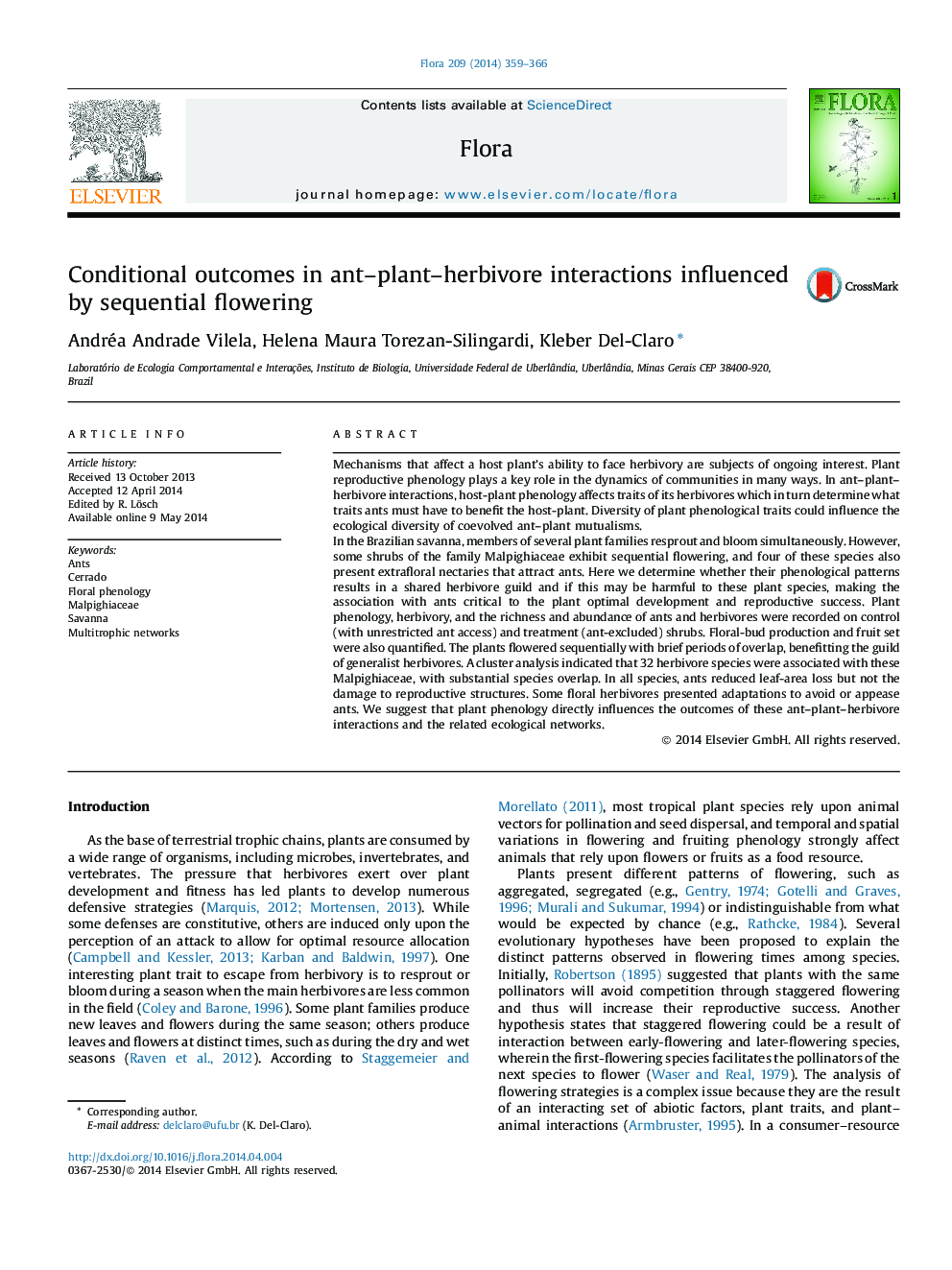| کد مقاله | کد نشریه | سال انتشار | مقاله انگلیسی | نسخه تمام متن |
|---|---|---|---|---|
| 2179492 | 1095054 | 2014 | 8 صفحه PDF | دانلود رایگان |
Mechanisms that affect a host plant’s ability to face herbivory are subjects of ongoing interest. Plant reproductive phenology plays a key role in the dynamics of communities in many ways. In ant–plant–herbivore interactions, host-plant phenology affects traits of its herbivores which in turn determine what traits ants must have to benefit the host-plant. Diversity of plant phenological traits could influence the ecological diversity of coevolved ant–plant mutualisms.In the Brazilian savanna, members of several plant families resprout and bloom simultaneously. However, some shrubs of the family Malpighiaceae exhibit sequential flowering, and four of these species also present extrafloral nectaries that attract ants. Here we determine whether their phenological patterns results in a shared herbivore guild and if this may be harmful to these plant species, making the association with ants critical to the plant optimal development and reproductive success. Plant phenology, herbivory, and the richness and abundance of ants and herbivores were recorded on control (with unrestricted ant access) and treatment (ant-excluded) shrubs. Floral-bud production and fruit set were also quantified. The plants flowered sequentially with brief periods of overlap, benefitting the guild of generalist herbivores. A cluster analysis indicated that 32 herbivore species were associated with these Malpighiaceae, with substantial species overlap. In all species, ants reduced leaf-area loss but not the damage to reproductive structures. Some floral herbivores presented adaptations to avoid or appease ants. We suggest that plant phenology directly influences the outcomes of these ant–plant–herbivore interactions and the related ecological networks.
Journal: Flora - Morphology, Distribution, Functional Ecology of Plants - Volume 209, Issue 7, July 2014, Pages 359–366
